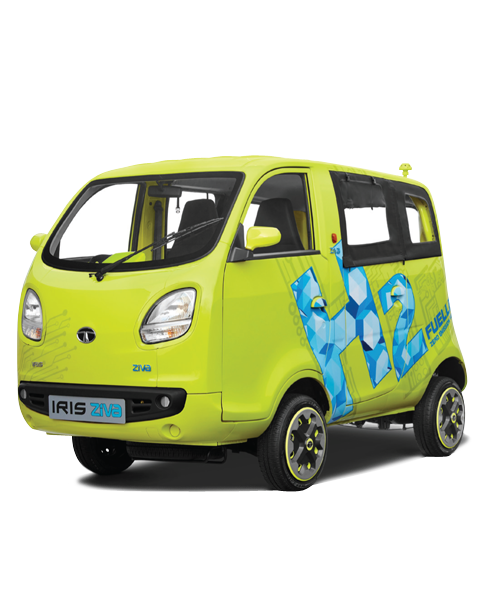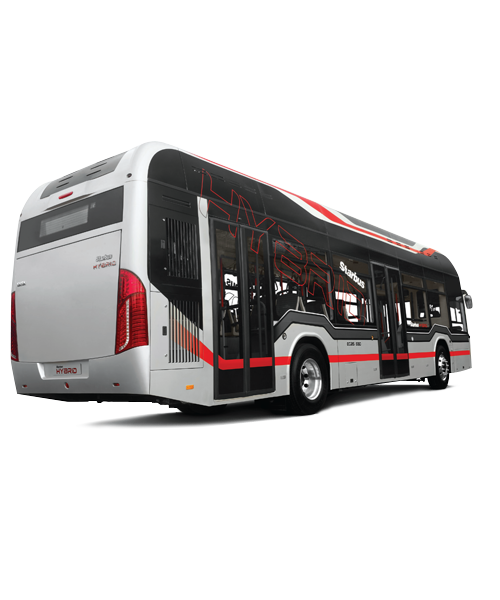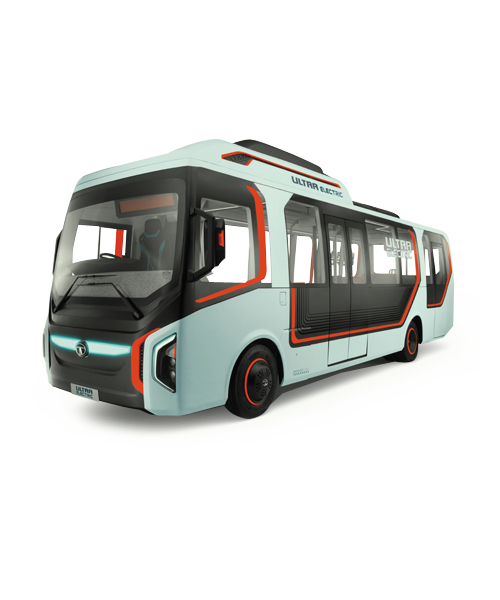Zippy performance, zero emission
Tata Motors showcased its futuristic hydrogen fuel cell technology at the Auto Expo 2016 in the Magic Iris Ziva, its popular last mile passenger transport vehicle. The gearless vehicle will have zero emissions due to the use of a hydrogen fuel cell. It also boasts of a powerful electric motor, powered by batteries, which enables the vehicle to run up to 40km in pure electric mode. The perfect solution for smart connected cities, the Magic Iris Ziva was developed with support from the Government of India's Department of Scientific and Industrial Research under the Technology Development and Demonstration Programme.

Clean power, green drives
Tata Motors' concern for the environment and commitment to sustainability has placed it at the forefront of the Indian automobile industry's efforts to tackle pollution and intensify its focus on developing alternative fuel engine technologies.
The future of transport
Reiterating its commitment towards reducing carbon emissions, Tata Motors showcased Starbus Hybrid, the world's first commercially produced CNG hybrid bus, at the Auto Expo 2016. A radical new transport option, the Starbus Hybrid offers substantial improvement in fuel economy and emits lower emissions as compared to conventional buses. The vehicle produces zero emissions when it works on electric mode, while the CNG mode is BS 4 compliant. It also uses new-generation lithium ion phosphate batteries (prismatic cell).
It is a matter of pride for Tata Motors that it recently bagged the single largest order awarded for hybrid electric vehicles. It signed a contract to supply 25 Starbus Diesel Series hybrid electric buses to the Mumbai Metropolitan Region Development Authority. These buses will be used to connect Bandra Kurla Complex to Sion, Bandra and Kurla railway stations over the next year, improving feeder services to Mumbai's fastest-growing business hub.

An electric ride
The Ultra Electric Bus, the first fully electric bus from Tata Motors, was introduced at the Auto Expo 2016. Built on the popular Tata Motors Ultra platform, the electric bus is meant for the urban commute. With complete electric drivetrain and zero emissions, the Ultra Electric Bus ensures low noise and vibration for a comfortable ride. Other features include roomy interiors which can be customised, utility provisions like charging ports and Wi-fi hotspot for on-the-go connectivity, high levels of security with Intelligent Transport System and security cameras, and new-generation telematics for efficient and user-friendly vehicle maintenance and tracking.

Clean speed
Jaguar Land Rover has been working on the electrification of powertrains over the last seven years. The company has developed a range of advanced plug-in hybrid (PHEV), mild hybrid (MHEV) and battery electric vehicle (BEV) propulsion systems.
As well as hybridisation and electrification, Jaguar Land Rover is working to make internal combustion engines cleaner and more energy efficient. The highly efficient diesel Ingenium engine achieves just 109g/km CO2 in the new Evoque, and 99g/km of CO2 in the new Jaguar XE. Moreover, the company has made advances in lightweight aluminium vehicle architecture to significantly reduce the weight of the body. Jaguar Land Rover is the largest user of sheet aluminium in the UK, and a world leader in aluminium recycling.